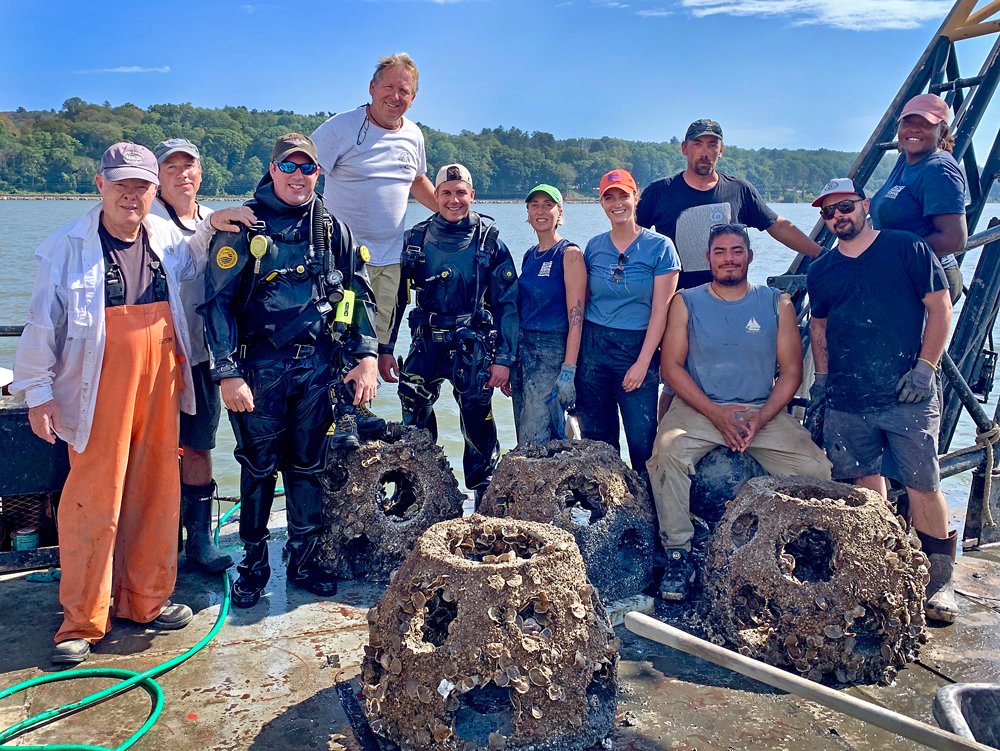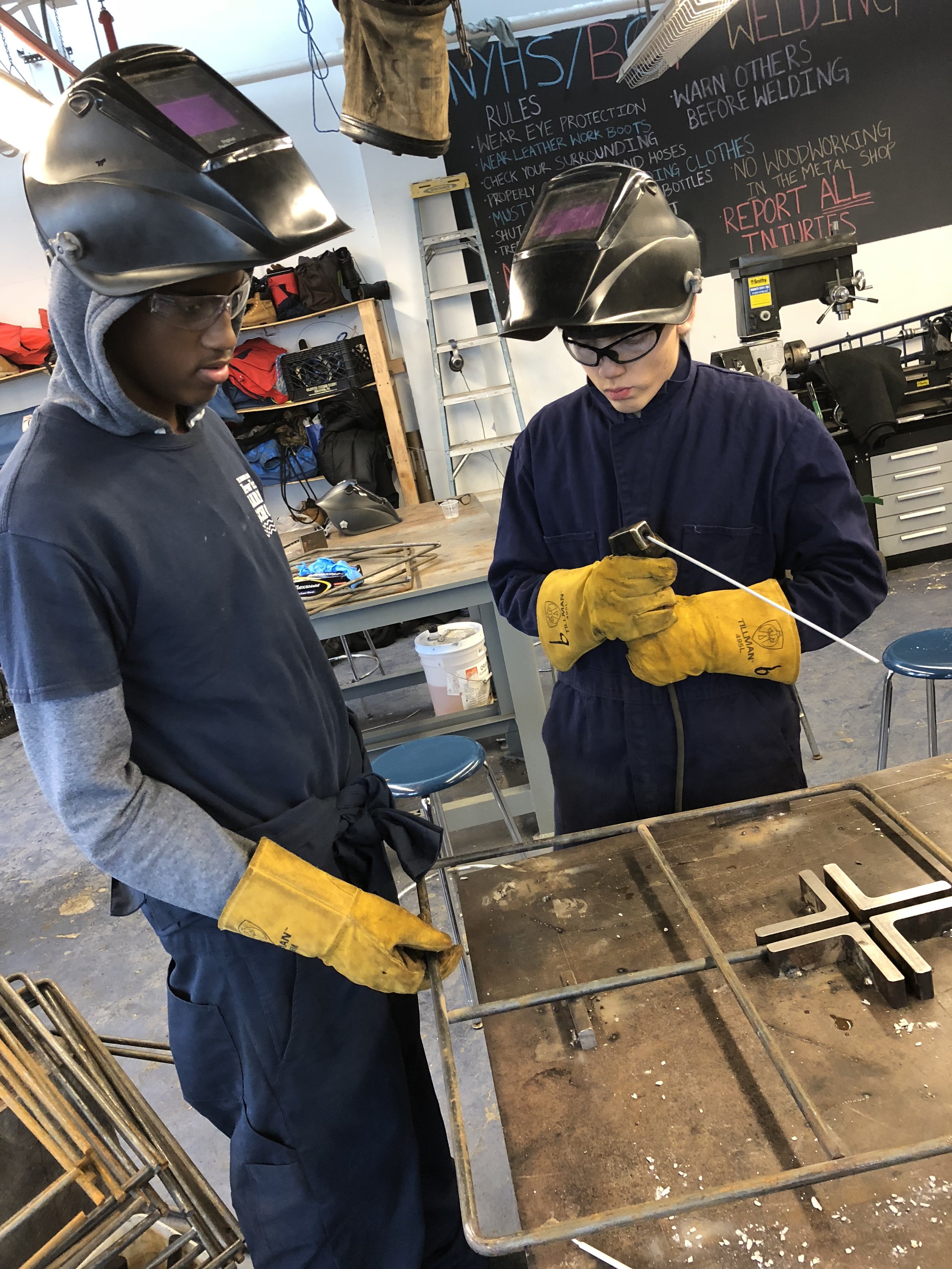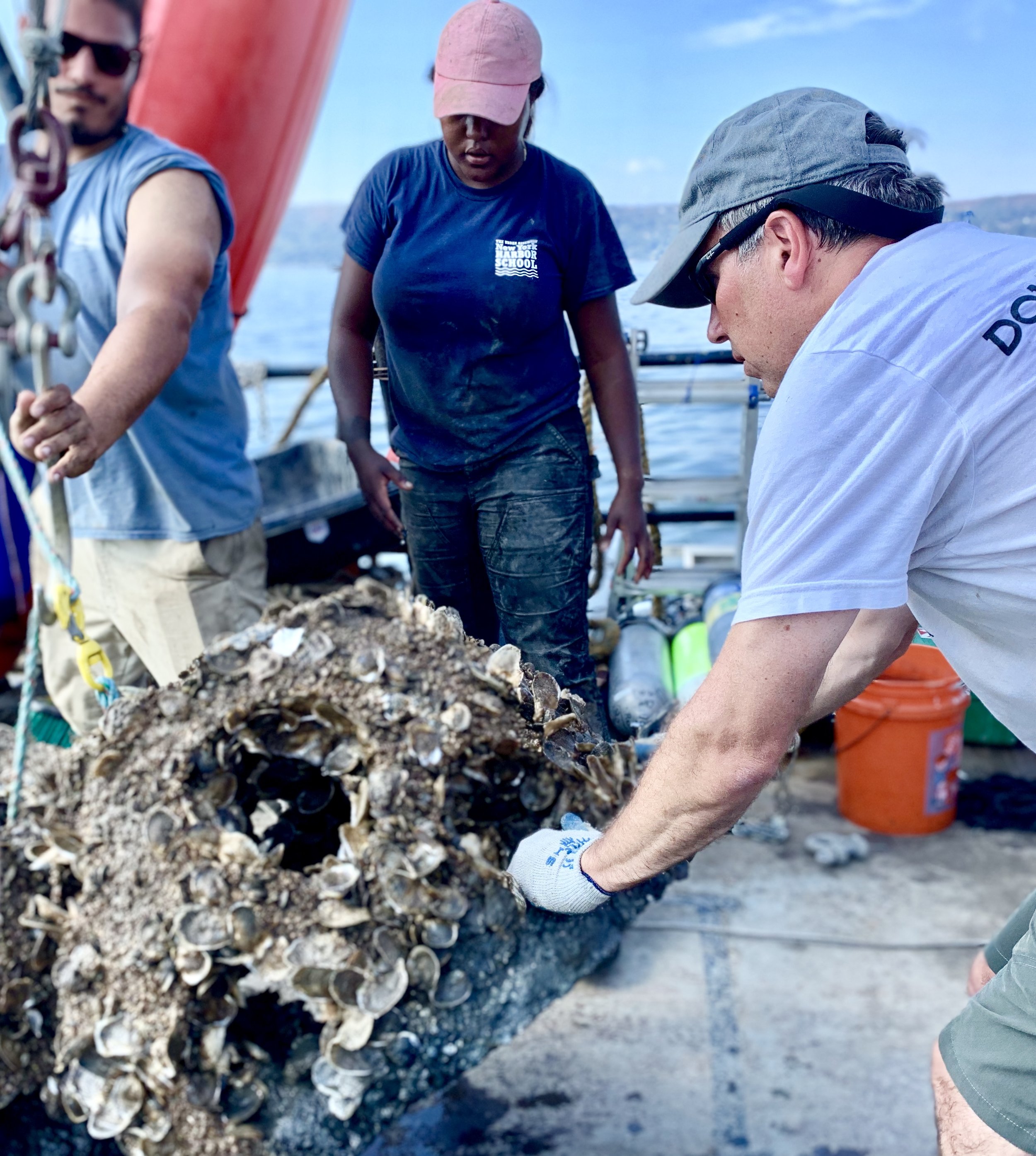Letting nature lead in the Hudson River
/As 2019 draws to a close, we are excited to shed light on a unique oyster habitat restoration effort unfolding in the Hudson River.
Last year, 422 Billion Oyster Project reef structures and 881 reef ball were deployed across five acres of the Hudson River by marine contractors from the NY Thruway Authority — making it the largest oyster restoration project in the region to date.
The crew aboard Helen A, owned and operated by Brooklyn Marine Services.
This effort, led by the Hudson River Foundation (HRF), in partnership with Billion Oyster Project, and the University of New Hampshire (UNH), is a mitigation measure to compensate for habitat impacts from the construction of the Governor Mario M. Cuomo Bridge.
Most New York City oyster restoration projects aim to restore oyster populations in areas where bivalves have been wiped out or exist in low densities. However, the scientists involved in this project were interested in capitalizing on the area’s wild oysters, that have survived the pollution and overharvesting that wiped out NYC’s historically abundant oyster reefs. These circumstances provided a great opportunity to test:
An “unseeded” restoration approach, in which steel structures were filled with empty shell reclaimed from NYC restaurants, with the expectation that nearby wild oyster larvae would settle on the substrate, survive long enough to reproduce, and sustainably recruit oysters. To date, all Billion Oyster Project oyster installations have involved spat on shell (baby oysters settled on shell in a hatchery).
Two types of substrate: cement reef balls without shell and the Billion Oyster Project’s metal cages filled with empty, or “blank,” shell.
The metal reef structures, called “gabions,” were designed, welded, and assembled by Harbor School students and staff, Billion Oyster Project team members, and volunteers. Read more on the design.
Beyond the record size of this project, these Hudson Reefs have other unique attributes. “This process was different,” says Jim Lodge, Senior Scientist at HRF. “The DEC and Thruway Authority approached the research and restoration communities and asked for help designing the project. The group provided advice and guidance over a three-year pilot testing phase. The information gained completely changed the original concept and design, and at the end of the day I think we have a much better project than we would have had.”
This fall, professional scuba divers, scientists, community volunteers, and work crews came together — eager to pull up the structures for the first time since deployment to see if new oysters had settled on the structures.
Harbor School graduates Marc Melendez (left) and Halcyon Spooner (center), and Jim Lodge of the Hudson River Foundation (right), pulling up oyster structures on Helen A.
“When we were pulling up the first couple gabions I’m thinking ‘Please let there be some oysters on the end of this line’,” says Lodge. “It was great! Especially in places where we saw hundreds of oysters on the reef balls and gabions — I felt like, ‘wow, this oyster wasn’t here before and now it is — and there are 500 friends!”
Seeing live oysters of various sizes settled on the shells indicates multiple spawns and an effective reef structure for keeping the shell and oysters out of the muddy Harbor bottom. In just over a year, this effort went from a pilot experiment to one of the largest and most promising oyster restoration projects in the region. HRF and UNH are now analyzing the data and we look forward to sharing more footage and results in the new year!
With your help we can continue toward our goal of one billion oysters restored to New York Harbor by 2035.




